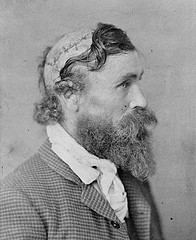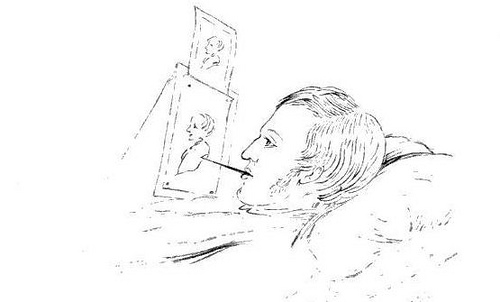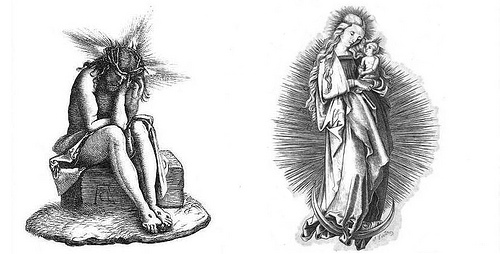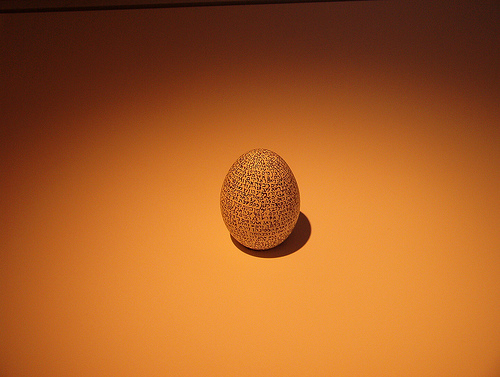“Round numbers are always false.” — Samuel Johnson
Author: Greg Ross
Hung Jury
In Don Quixote, Cervantes tells of a bridge at one end of which stand a gallows and a tribunal charged with enforcing this law:
If anyone crosses by this bridge from one side to the other he shall declare on oath where he is going to and with what object; and if he swears truly, he shall be allowed to pass, but if falsely, he shall be put to death for it by hanging on the gallows erected there, without any remission.
The tribunal allows many travelers to pass freely, as it is easy to see that their declarations are truthful. But one day a man appears who swears that he has come expressly to die upon the gallows.
“It is asked of your worship, señor governor, what are the judges to do with this man?”
How the West Was Won

Some scalping victims survived. At left is Robert McGee, who was scalped as a teenager by Sioux chief Little Turtle in 1864.
Texas settler Josiah P. Wilbarger was scalped by Comanches in August 1833. He later recalled that “while no pain was perceptible, the removing of his scalp sounded like the ominous roar and peal of distant thunder,” recounts James De Shields in Border Wars of Texas.
“Rapidly Wilbarger recovered his usual health, and lived for eleven years, prospering, and accumulating a handsome estate. But his skull, bereft of the inner membrane and so long exposed to the sun, never entirely covered over, necessitating artificial covering, and eventually caused his death, hastened, as his physician, Dr. Anderson, thought, by accidentally striking his head against the upper portion of a low door frame of his gin house, causing the bone to exfoliate, exposing the brain and producing delirium.” He died in 1845.
The Crawfordsville Monster
The Indianapolis Journal of Sept. 5, 1891, reports that two icemen were hitching a wagon in Crawfordsville, Ind., at 2 a.m. on Sept. 4 when they saw in the sky “a horrible apparition approaching from the west.” A headless monster, 18 feet long and 8 feet wide, floated 300 feet overhead, apparently propelled by fins. It circled a nearby house, disappeared to the east, then returned, emitting a wheezing, moaning sound. The men fled, but the noise awakened a Methodist pastor, who saw the creature from his window.
Reportedly it returned on the following evening, when hundreds of witnesses saw a flapping “thing” that “squirmed in agony” and made a “wheezing, plaintive noise” as it hovered in the sky.
That’s all we know. The creature, if it really existed, never returned to Crawfordsville.
A Sign
In 1612, John Donne accompanied Sir Robert Drury to Paris, leaving his pregnant wife in London.
Two days after their arrival there, Mr. Donne was left alone, in that room in which Sir Robert, and he, and some other friends had dined together. To this place Sir Robert return’d within half an hour; and, as he left, so he found Mr. Donne alone; but, in such Extasie, and so alter’d as to his looks, as amaz’d Sir Robert to behold him: insomuch that he earnestly desired Mr. Donne to declare what had befaln him in the short time of his absence? to which, Mr. Donne was not able to make a present answer: but, after a long and perplext pause, did at last say, I have seen a dreadful Vision since I saw you: I have seen my dear wife pass twice by me through this room, with her hair hanging about her shoulders, and a dead child in her arms: this, I have seen since I saw you. To which, Sir Robert reply’d; Sure Sir, you have slept since I saw you; and, this is the result of some melancholy dream, which I desire you to forget, for you are now awake. To which Mr. Donnes reply was: I cannot be surer that I now live, then that I have not slept since I saw you: and am, as sure, that at her second appearing, she stopt, and look’d me in the face, and vanisht.
Donne and Drury immediately sent a messenger to London. He returned to say that Mrs. Donne had borne a dead child at the hour her husband thought he had seen her in Paris.
(From Izaak Walton, Life of Dr John Donne, 1675)
John Carter

Paralyzed in a fall in 1836, John Carter discovered a talent for art, holding a brush in his teeth and working in bed. The figures below are after Albrecht Dürer.

See also No Handicap, Sarah Biffen, and Prince Randian.
Nine Lives
Take any number and rearrange its digits to form another number.
Subtract one from the other. The difference will always be divisible by 9.
A Modest Proposal
As a teenager, John Kenneth Galbraith was romancing the daughter of a neighboring farmer when a bull entered a nearby corral and began servicing one of the cows.
“That looks like it would be fun,” Galbraith said.
The girl said, “Well … it’s your cow.”
In the Beginning

The first chapter of Genesis, written on an egg.
From the Jerusalem Museum.
In a Word
darg
n. a day’s work
